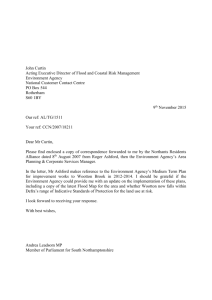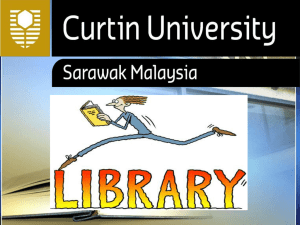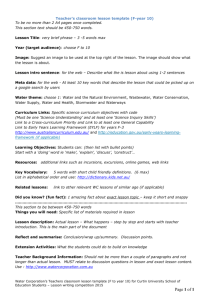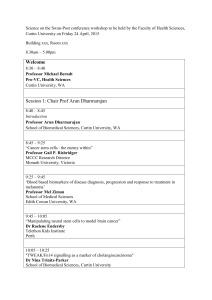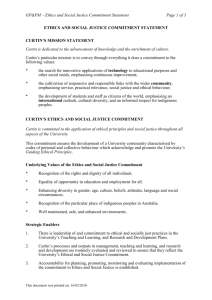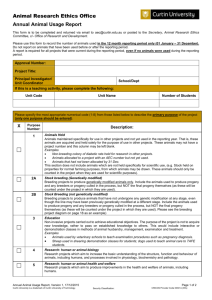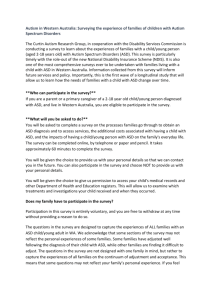Communicating Copyright Material via a Curtin Website: A Checklist
advertisement
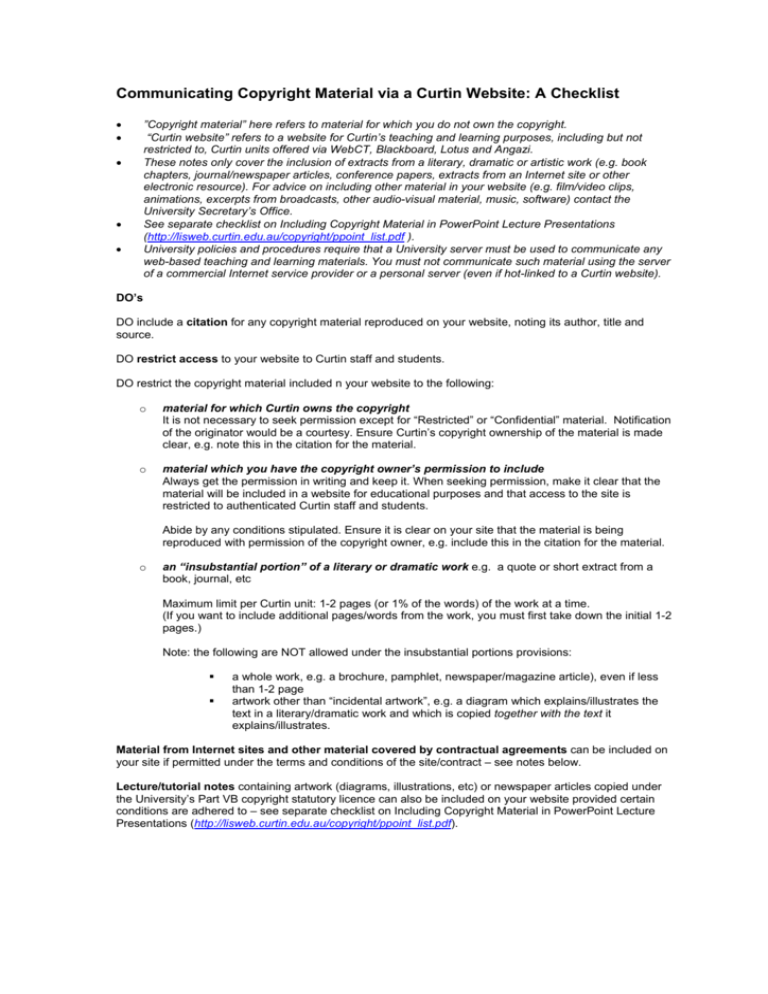
Communicating Copyright Material via a Curtin Website: A Checklist • • ”Copyright material” here refers to material for which you do not own the copyright. “Curtin website” refers to a website for Curtin’s teaching and learning purposes, including but not restricted to, Curtin units offered via WebCT, Blackboard, Lotus and Angazi. These notes only cover the inclusion of extracts from a literary, dramatic or artistic work (e.g. book chapters, journal/newspaper articles, conference papers, extracts from an Internet site or other electronic resource). For advice on including other material in your website (e.g. film/video clips, animations, excerpts from broadcasts, other audio-visual material, music, software) contact the University Secretary’s Office. See separate checklist on Including Copyright Material in PowerPoint Lecture Presentations (http://lisweb.curtin.edu.au/copyright/ppoint_list.pdf ). University policies and procedures require that a University server must be used to communicate any web-based teaching and learning materials. You must not communicate such material using the server of a commercial Internet service provider or a personal server (even if hot-linked to a Curtin website). • • • DO’s DO include a citation for any copyright material reproduced on your website, noting its author, title and source. DO restrict access to your website to Curtin staff and students. DO restrict the copyright material included n your website to the following: o material for which Curtin owns the copyright It is not necessary to seek permission except for “Restricted” or “Confidential” material. Notification of the originator would be a courtesy. Ensure Curtin’s copyright ownership of the material is made clear, e.g. note this in the citation for the material. o material which you have the copyright owner’s permission to include Always get the permission in writing and keep it. When seeking permission, make it clear that the material will be included in a website for educational purposes and that access to the site is restricted to authenticated Curtin staff and students. Abide by any conditions stipulated. Ensure it is clear on your site that the material is being reproduced with permission of the copyright owner, e.g. include this in the citation for the material. o an “insubstantial portion” of a literary or dramatic work e.g. a quote or short extract from a book, journal, etc Maximum limit per Curtin unit: 1-2 pages (or 1% of the words) of the work at a time. (If you want to include additional pages/words from the work, you must first take down the initial 1-2 pages.) Note: the following are NOT allowed under the insubstantial portions provisions: a whole work, e.g. a brochure, pamphlet, newspaper/magazine article), even if less than 1-2 page artwork other than “incidental artwork”, e.g. a diagram which explains/illustrates the text in a literary/dramatic work and which is copied together with the text it explains/illustrates. Material from Internet sites and other material covered by contractual agreements can be included on your site if permitted under the terms and conditions of the site/contract – see notes below. Lecture/tutorial notes containing artwork (diagrams, illustrations, etc) or newspaper articles copied under the University’s Part VB copyright statutory licence can also be included on your website provided certain conditions are adhered to – see separate checklist on Including Copyright Material in PowerPoint Lecture Presentations (http://lisweb.curtin.edu.au/copyright/ppoint_list.pdf). DON’Ts DON’T include “unsourced” material on your site – you must include a citation for all copyright material included on your site noting its author, title and source. DON’T allow non Curtin staff/students to access the site and DON’T use it for commercial/consultancy purposes, unless you consult the Office of the University Secretary’s Office. DON’T include material which was not "made available to the public" (e.g. unpublished material, student work, material obtained in confidence or pursuant to a contract of employment) unless you have the written permission of the copyright owner to reproduce it. DON’T include material copied from the Library’s electronic databases, e-books or e-journals. For these, use the Library's E-Reserve system or consult the relevant Deputy University Librarian. DON’T include material copied under the University’s Part VB statutory copyright license, e.g. book chapters, journal articles, conference papers. As there are university-wide limits on the amount of copyright material which can be made available online under the University’s statutory copyright licenses, such material should normally be communicated via the Library's E-Reserve system. Exceptions: insubstantial portions of a literary or dramatic work (see Do’s above), or lecture/tutorial notes or presentations containing diagrams/illustrations or newspaper articles (see separate checklist on Including Copyright Material in PowerPoint Lecture Presentations http://lisweb.curtin.edu.au/copyright/ppoint_list.pdf ). For further information, or to discuss your requirements, consult the relevant Deputy University Librarian. NOTES: Material covered by contractual agreements, e.g. electronic resources and textbooks: Material from resources covered by contractual agreements (e.g. licences, subscription agreements, "clickon" or "shrink-wrapped" terms of use) can only be included on Curtin websites if permitted under the terms of the agreement. (Note that nearly all electronic products have “contractual agreements” and many Curtin Schools have agreements with textbook publishers.) You must abide by any copying limits or other terms specified. Refer to your compliance with these conditions in your site, e.g. include in the citation for the material “Reproduced in compliance with license conditions”. Material from Internet sites: Many Internet sites also stipulate conditions on copying their content. These are normally located on the site's homepage. Some conditions will be more liberal than the University's copyright licenses, some will be more restrictive. o If the site contains conditions, you must abide by them or seek an exemption from them by contacting the copyright owner (see Do’s above). o If no copyright conditions are stated, theoretically material on the site can be communicated via the Library’s E-Reserve system under the University’s Part VB license. However, as material on the Internet is not generally conveniently divided into articles and chapters, it is sometimes difficult to interpret the copying limits applicable under this license. Hence it is generally preferable to seek permission from the copyright owner (see Do’s above). Hints: o If you copy material from an Internet site under the terms and conditions stipulated on the site, include the URL for the copyright conditions in the citation for the copied material and note that you have complied with the conditions stated. o Rather than downloading Internet material to your website, it may be simpler to provide students with its URL so they can access it for themselves. This is not considered "copying". But do not "deep link", i.e. don't link in such a way as to give the impression that you or Curtin is the copyright owner of the material you have linked to. E-Reserve Information on the Library’s E-Reserve system and guidelines for lodging material for E-Reserve are available at: http://lisweb.curtin.edu.au/services/reserve.html#ereserve The E-Reserve Guidelines also explain how links can be created from your website to items on E-Reserve.
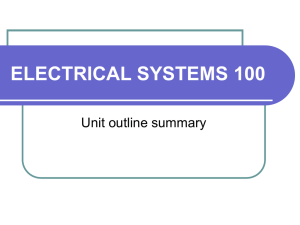
![e-Reserve for academics: your required reading solution [ 226KB]](http://s3.studylib.net/store/data/008170839_1-092998fcf76d73737fa8128d01c357b4-300x300.png)
